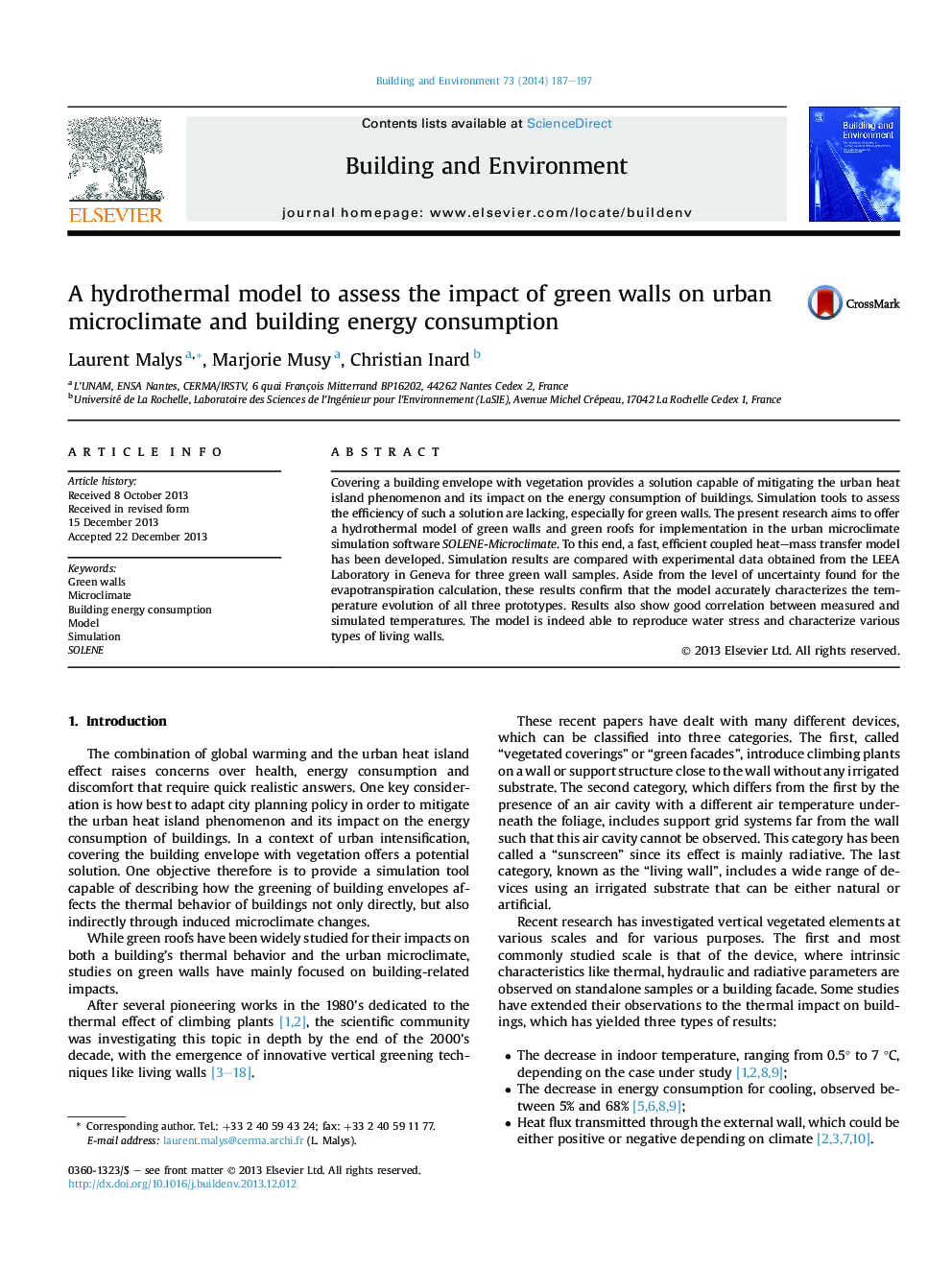| Article ID | Journal | Published Year | Pages | File Type |
|---|---|---|---|---|
| 248180 | Building and Environment | 2014 | 11 Pages |
•We implemented a hydrothermal model of green walls in SOLENE-Microclimate.•The model can reproduce water stress and characterize various types of living walls.•It has been validated using experimental data for three green wall samples.•Measured water balance and temperatures for three green wall samples were used.•Results show good correlation between measured and simulated temperatures.
Covering a building envelope with vegetation provides a solution capable of mitigating the urban heat island phenomenon and its impact on the energy consumption of buildings. Simulation tools to assess the efficiency of such a solution are lacking, especially for green walls. The present research aims to offer a hydrothermal model of green walls and green roofs for implementation in the urban microclimate simulation software SOLENE-Microclimate. To this end, a fast, efficient coupled heat–mass transfer model has been developed. Simulation results are compared with experimental data obtained from the LEEA Laboratory in Geneva for three green wall samples. Aside from the level of uncertainty found for the evapotranspiration calculation, these results confirm that the model accurately characterizes the temperature evolution of all three prototypes. Results also show good correlation between measured and simulated temperatures. The model is indeed able to reproduce water stress and characterize various types of living walls.
